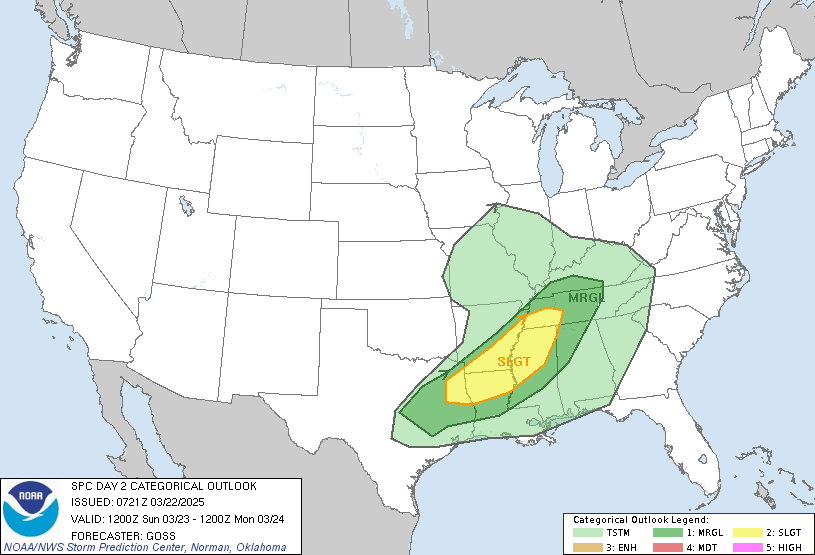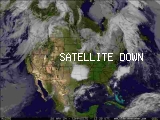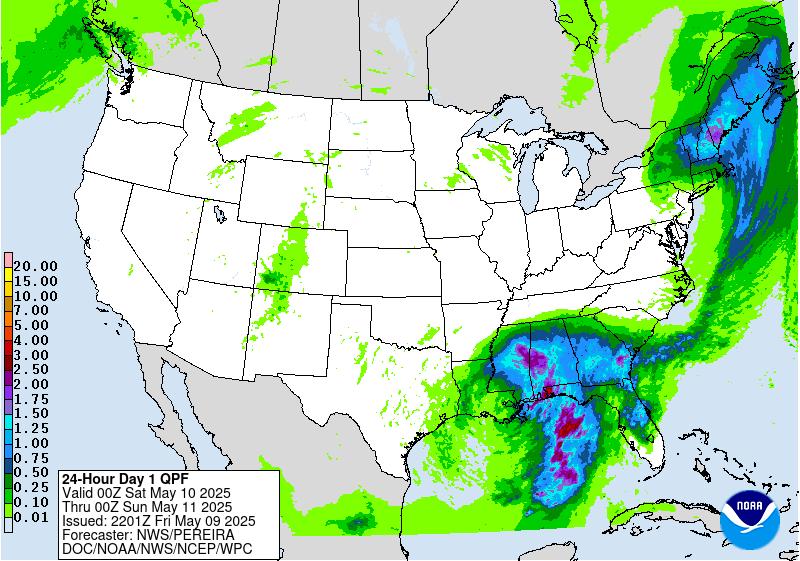No watches are valid as of Sat Apr 27 06:10:02 UTC 2024.No Mesoscale Discussions are in effect as of Sat Apr 27 06:10:02 UTC 2024.SPC 1200Z Day 1 Outlook

Day 1 Convective Outlook
NWS Storm Prediction Center Norman OK
0104 AM CDT Sat Apr 27 2024
Valid 271200Z - 281200Z
...THERE IS A MODERATE RISK OF SEVERE THUNDERSTORMS ACROSS PARTS OF
NORTH TEXAS...OKLAHOMA...SOUTHEAST KANSAS AND FAR SOUTHWEST
MISSOURI...
...SUMMARY...
Numerous severe thunderstorms are likely today and tonight across
the southern and central Plains into the lower to mid Missouri
Valley. The greatest potential for severe storms will be from north
Texas into Oklahoma and southeast Kansas, where strong tornadoes,
very large hail over 2 inches in diameter and widespread damaging
winds (some over 70 mph), are expected to occur. A broader area of
severe threat will extend from south-central Texas
north-northeastward to the Great Lakes.
...Tornado Outbreak Expected Today From North Texas into
Oklahoma...Southeast Kansas and Far Southwest Missouri...
...Southern Plains...
An upper-level trough will move through the Desert Southwest today
as an 80 to 90 knot mid-level jet translates quickly eastward
through the base of the system. Ahead of the trough, a moist and
unstable airmass will be in place across much of the southern and
central Plains. At the surface, a low will move eastward across
southwest Kansas with a dryline extending southward through far
western Oklahoma and west Texas. Surface dewpoints to the east of
the dryline will be in the mid to upper 60s F. In response to warm
advection this morning, a cluster of thunderstorms is expected to
develop to the east of the dryline across northwest Texas. This
cluster is forecast to spread north-northeastward into western
Oklahoma by late morning. Large hail and wind damage will be likely
with the stronger cells within this cluster. An outflow boundary
with this convection should setup across west-central Oklahoma by
early afternoon, with a moist and unstable airmass extending
eastward from the boundary across much of central and eastern
Oklahoma northward into southeast Kansas. This undisturbed airmass
is expected to be favored for the greatest severe threat this
afternoon and evening.
The mid-level jet is forecast to eject quickly northeastward across
the southern Plains this afternoon. This will result in strong
deep-layer shear across most of the southern Plains, and will create
a large-scale mass response that will be very favorable for severe
storms, including supercells and bowing line segments. As the core
of the mid-level jet moves into the southern Plains during the mid
to late afternoon, a 50 to 60 knot low-level jet will rapidly
strengthen. RAP forecast sounding along and near the low-level jet
during the late afternoon look very favorable for tornadoes, with
backed surface flow, and long looping hodographs. As the low-level
jet strengthens, 0-3 km storm-relative helicity is forecast to
increase to around 400 m2/s2 across much of central and eastern
Oklahoma into southeast Missouri. The more dominant and supercells
that interact with the western and northern edge of the low-level
jet are expected to become tornadic. Several strong tornadoes will
be likely, and a few long-track EF3+ tornadoes will be possible.
In addition to the tornado threat, forecast soundings have 700-500
mb lapse rates near 8 C/km across much of the warm sector this
afternoon from north Texas to southeast Kansas. This will be
favorable for very large hail, with hailstones over 2 inches in
diameter likely with the more intense storms. Later in the evening,
a line of severe storms is expected to form, moving eastward across
eastern Oklahoma and north Texas. Wind gusts over 70 mph will be
possible with the more intense parts of the line. QLCS tornadoes
will also be possible with rotating cells embedded in the line late
this evening into the overnight period.
...Central Plains/Lower to Mid Missouri Valley...
An upper-level low will move through the southern Rockies today, as
the exit region of a mid-level jet overspreads the central Plains.
At the surface, a warm front will be located from near a surface low
in southwest Kansas east-northeastward into the mid Missouri Valley.
This front will be a focus for convective development this
afternoon. A band of severe storms is expected to form near the
front and move northward across northern Kansas into southern
Nebraska during the early to mid afternoon. RAP forecast soundings
in northeast Kansas near the front from 18Z to 21Z have MLCAPE near
3000 J/kg, 0-6 km shear around 60 knots, and steep low to mid-level
lapse rates. This environment will be very favorable for supercells
with large hail. Hailstones greater than 2 inches in diameter will
be possible with the more intense storms. In addition, forecast
soundings have 0-3 km storm-relative helicity in the 250 to 300
m2/s2 range, suggesting that tornadoes will be likely with the more
discrete supercells. A few strong tornadoes will be possible.
Further west into northwest Kansas and eastern Colorado, cold
temperatures aloft, strong large-scale ascent associated with an
upper-level low, and strong deep-layer shear will likely support
lower-topped supercells with large hail and strong wind gusts this
afternoon.
...Mid to Upper Mississippi Valley/Great Lakes...
An upper-level trough will move northeastward across the Great Lakes
region today. From near the trough, and southwestward into the mid
to upper Mississippi Valley, a wide corridor of moderate instability
will be in place by afternoon. A warm front will be in located along
the northern edge of the instability, from Iowa northeastward into
south-central Wisconsin and north-central lower Michigan. As surface
heating takes place and low-level convergence increases along the
front, thunderstorms will likely form in the vicinity of the
boundary. Forecast soundings near the front at 21Z have MLCAPE
around 3000 J/kg, along with 40 knots of deep-layer shear. This
should support supercells with potential for large hail and wind
damage. The severe threat should be greatest during the late
afternoon and early evening.
..Broyles/Thornton.. 04/27/2024
SPC 0600Z Day 2 Outlook

Day 2 Convective Outlook
NWS Storm Prediction Center Norman OK
1257 AM CDT Sat Apr 27 2024
Valid 281200Z - 291200Z
...THERE IS A SLIGHT RISK OF SEVERE THUNDERSTORMS FROM EAST TX
NORTHWARD INTO THE UPPER MS VALLEY...
...SUMMARY...
Strong to potentially severe thunderstorms will be possible Sunday
from northeast Texas into parts of the upper Mississippi Valley.
Damaging winds, hail, and a few tornadoes will all be possible.
...East TX into the upper MS Valley...
A broad region of at least some severe potential is still expected
on Sunday from northeast TX into parts of the upper MS Valley.
Within this larger region, it appears the greatest relative threat
may develop from northeast TX/southeast OK into western AR/northwest
LA. However, with very extensive convection expected upstream on
D1/Saturday, uncertainty is too high to increase probabilities at
this time.
A negatively tilted shortwave trough and attendant surface low are
forecast to move from the central Plains toward the upper MS Valley
on Sunday. Widespread convection will likely be ongoing at the start
of the period from Texas toward the lower MO Valley, and potentially
farther north into parts of the upper Midwest. Some lingering severe
threat could accompany this morning convection, especially toward
the ArkLaTex region where somewhat more favorable
moisture/instability will be in place.
There is some potential for morning convection to remain somewhat
organized and continue eastward with a severe threat, but the
greater concern will be with redevelopment in the wake of morning
convection, with rich low-level moisture expected to remain in place
along/ahead of the dryline, which will likely extend from eastern
NE/KS into central OK/TX by late afternoon.
One area of potential redevelopment will be immediately ahead of the
ejecting shortwave trough from eastern KS/NE into western MO and
southern IA, where a few stronger cells/clusters could pose a threat
of hail, isolated damaging gusts, and a tornado or two. The
magnitude of this threat will be strongly dependent on the extent of
diurnal destabilization in the wake of morning convection.
Potentially more vigorous redevelopment will be possible along the
western/southern periphery of remnant early convection near the
ArkLaTex region, where rich moisture and favorable wind profiles
will support organized convection, if sufficient
recovery/destabilization can occur. Supercells will be possible,
though there may be a tendency toward cluster or linear mode as
storm coverage increases. Damaging gusts, hail and a few tornadoes
will be possible within this regime, though magnitude and favored
placement of the threat remain uncertain at this time.
...Northeast OH into PA...
A few stronger storms will be possible Sunday afternoon from
northeast OH into PA, within a weakly forced northwest-flow regime.
At this time, instability appears too weak to support an organized
severe threat, though small hail and gusty winds will be possible
with the strongest storms.
..Dean.. 04/27/2024
|























































































